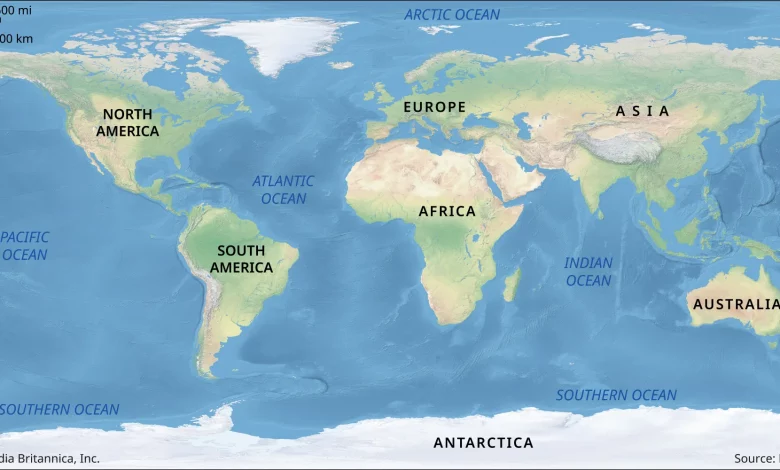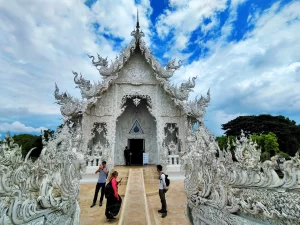Top 10 smallest countries in the World

The world is diverse and vast, with countries varying in size, population, and culture. Some countries are known for their vast landscapes and bustling cities, while others captivate us with their unique charm and small size. In this article, we will embark on a journey to discover the top 10 smallest countries in the world, exploring their fascinating history, culture, and notable landmarks. So let’s dive in and explore these hidden gems!
What is a country?
A country is not just a geographical entity, but a vibrant tapestry of people, cultures, and traditions. It is a place where individuals come together to form a community, united by a common purpose and shared values. A country is a home, a sanctuary, and a source of inspiration. It is a place where dreams are nurtured, opportunities are created, and achievements are celebrated. It is a testament to the resilience and determination of its people. A country is not merely defined by its borders on a map but by the spirit and essence of its citizens.
In essence, a country is a microcosm of the world. It is a melting pot of diverse backgrounds, languages, and customs. It is a place where different ideas collide and innovation thrives. A country provides a platform for individuals to express themselves, share their unique perspectives, and contribute to collective growth and progress. It is a place where tolerance and acceptance are embraced, fostering an environment of mutual respect and understanding.
A country is more than just its physical attributes; it is the embodiment of its history and heritage. It encapsulates the struggles and triumphs of its people throughout the ages. It is a reflection of the past, a guide for the present, and a hope for the future. A country’s traditions and cultural practices shape its identity, giving it a distinct flavour that sets it apart from others. These rich cultural tapestries are woven into the fabric of society, adding depth and richness to the overall experience.
Moreover, a country is not just about its landmass or its population; it is about the values that it upholds. It is about justice, equality, and freedom. A country strives to provide its citizens with the necessities of life while also creating an environment that allows them to pursue their passions and aspirations. It promotes education, innovation, and entrepreneurship, creating opportunities for growth and prosperity. A country is a beacon of hope for those seeking refuge or a better life, offering them a chance to rebuild their lives and contribute to society.
A country is therefore more than just a piece of land; it is an embodiment of the human spirit. It represents the collective hopes, dreams, and aspirations of its people. A country is a testament to what can be achieved when individuals come together with a common purpose. It is a place where diversity is celebrated, innovation is nurtured, and progress is made. A country is not just about its physical attributes; it is about the values it upholds and the sense of belonging it instils in its citizens. So let us cherish our countries and work towards making them even better places for future generations.
Top 10 smallest countries in the World
Vatican City: A Tiny Sovereign State
- Area: Less than 1 square kilometre
- Population: Approximately 800 citizens
Our journey begins with Vatican City, the world’s smallest country in terms of area and population. Nestled within the city of Rome, Italy, Vatican City is an independent city-state and the spiritual and administrative headquarters of the Roman Catholic Church. With an area of less than 1 square kilometre, Vatican City is a sovereign state ruled by the Pope.
Despite its small size, Vatican City is home to some of the most iconic landmarks and artistic treasures in the world. The magnificent St. Peter’s Basilica, the Sistine Chapel adorned with Michelangelo’s masterpiece, and the Vatican Museums housing a vast collection of art and historical artefacts are just a few examples of the rich cultural heritage found within its walls.
Monaco: A Glamorous Playground
- Area: 2 square kilometers
- Population: Approximately 36,000 residents
Moving on to Monaco, we encounter a glamorous and luxurious principality situated on the French Riviera. Known for its opulent casinos, yachts, and Formula One Grand Prix, Monaco is a playground for the rich and famous. With an area of 2 square kilometres, it is the second-smallest country in the world.
Despite its small size, Monaco boasts breathtaking scenery, including the iconic Monte Carlo Casino, the Prince’s Palace, and the stunning Japanese Gardens. The country’s wealth and tax haven status have attracted celebrities, entrepreneurs, and high-net-worth individuals from around the globe, making it a vibrant and cosmopolitan destination.
Gibraltar: Where Europe Meets Africa
- Area: 7 square kilometers
- Population: Approximately 32,000 residents
As we continue our exploration, we come across Gibraltar, a unique British Overseas Territory located at the southern tip of the Iberian Peninsula. This small but strategically significant territory is known as “The Rock” due to its prominent limestone rock formation.
Gibraltar offers a fascinating blend of British and Mediterranean influences, creating a vibrant and multicultural atmosphere. Its iconic landmark, the Rock of Gibraltar, provides panoramic views of the Strait of Gibraltar, where Europe and Africa almost touch. Gibraltar is also home to the famous Barbary macaques, the only wild monkeys in Europe.
Tokelau: A Tropical Paradise
- Area: 12 square kilometers
- Population: Approximately 1,900 residents
Our next destination takes us to Tokelau, a group of three coral atolls in the South Pacific Ocean. With an area of 12 square kilometres, Tokelau is one of the smallest and most remote inhabited territories in the world. Despite its size, this tropical paradise offers stunning white-sand beaches, crystal-clear waters, and a laid-back island lifestyle.
Tokelau is a self-governing territory under New Zealand’s administration, and its population consists mainly of Polynesian people. The islands are known for their rich cultural heritage, with traditional music, dance, and crafts playing an integral role in the local community. Tokelau’s isolation has helped preserve its natural beauty and traditional way of life.
Nauru: A Pacific Island Nation
- Area: 21 square kilometers
- Population: Approximately 13,000 residents
Continuing our journey through the Pacific, we arrive at Nauru, a small island nation located northeast of Australia. With an area of 21 square kilometres, Nauru is the third-smallest country in the world. Despite its size, it boasts a fascinating history and unique cultural heritage.
Nauru was once one of the richest countries globally, thanks to its phosphate deposits. However, the depletion of these resources has posed challenges to the nation’s economy. Nevertheless, Nauru offers visitors the chance to explore its stunning beaches, dive into its vibrant underwater world, and learn about its rich cultural traditions.
Saint Barthelemy: A Caribbean Gem
- Area: 21 square kilometers
- Population: Approximately 11,000 residents
In the heart of the Caribbean, we discover Saint Barthelemy, often referred to as St. Barts. With an area of 21 square kilometres, this French overseas collectivity is known for its stunning beaches, luxury resorts, and vibrant nightlife.
Saint Barthelemy offers a unique blend of French and Caribbean influences, creating a laid-back yet sophisticated atmosphere. The island’s charming capital, Gustavia, features picturesque streets lined with high-end boutiques, gourmet restaurants, and quaint cafes. Visitors can indulge in water sports, explore the island’s natural beauty, or relax on its pristine beaches.
Tuvalu: A Pacific Island Nation
- Area: 26 square kilometers
- Population: Approximately 11,000 residents
Our next stop takes us to Tuvalu, a small island nation located in the Pacific Ocean. With an area of 26 square kilometres, Tuvalu comprises nine coral atolls and is one of the smallest countries in the world. It’s remote location and pristine natural beauty make it a hidden gem for intrepid travellers.
Tuvalu is renowned for its stunning turquoise waters, abundant marine life, and vibrant coral reefs. Visitors can immerse themselves in the local culture by attending traditional dances and exploring the handicraft markets. Tuvalu’s commitment to sustainability and environmental conservation is evident in its efforts to combat climate change and maintain its fragile ecosystem.
Macau: The Las Vegas of the East
- Area: 33 square kilometers
- Population: Approximately 700,000 residents
Next on our journey is Macau, a vibrant and bustling Special Administrative Region of China. With an area of 33 square kilometres, Macau is known as the “Las Vegas of the East” due to its thriving casino industry and vibrant nightlife.
Macau seamlessly blends Chinese and Portuguese influences, creating a unique cultural fusion. The city’s historic centre, a UNESCO World Heritage Site, showcases beautiful colonial architecture and ancient temples alongside modern skyscrapers. Macau is also renowned for its culinary scene, with a diverse range of dining options to suit every palate.
Sint Maarten: An Island of Contrasts
- Area: 34 square kilometers
- Population: Approximately 40,000 residents
Continuing our exploration of the Caribbean, we arrive at Sint Maarten, a constituent country within the Kingdom of the Netherlands. With an area of 34 square kilometres, the island of Sint Maarten is divided between the Dutch and French, creating a unique blend of European and Caribbean cultures.
Sint Maarten offers visitors diverse experiences, from pristine beaches and crystal-clear waters to lively nightlife and duty-free shopping. The island’s friendly locals, known as “St. Maarteners,” welcome visitors with open arms, making it a popular destination for relaxation and adventure.
Saint Martin: A Caribbean Paradise
- Area: 53 square kilometers
- Population: Approximately 32,000 residents
Our final destination on this journey is Saint Martin, the French side of the island shared with Sint Maarten. With an area of 53 square kilometres, Saint Martin captivates visitors with its stunning beaches, turquoise waters, and vibrant culture.
Saint Martin offers a unique blend of French and Caribbean influences, creating a charming and cosmopolitan atmosphere. The island is renowned for its culinary delights, with a wide array of gourmet restaurants serving exquisite French and Creole cuisine. Visitors can also explore the island’s natural beauty, indulge in water sports, or relax on its pristine shores.
Top 10 Smallest Countries in the World by Population
Above, we have the list of the top 10 smallest countries in the world in terms of surface area. Below is the list of the smallest countries when it comes to population.
| Country | 2024 Population |
|---|---|
| Vatican City | 800 |
| Tokelau | 1,915 |
| Niue | 1,935 |
| Falkland Islands | 3,803 |
| Montserrat | 4,372 |
| Saint Pierre and Miquelon | 5,815 |
| Saint Barthelemy | 11,019 |
| Wallis and Futuna | 11,439 |
| Tuvalu | 11,478 |
| Nauru | 12,884 |
Conclusion: Exploring the World’s Smallest Countries
As our journey comes to an end, we have explored the top 10 smallest countries in the world, each offering its own unique charm and allure. From the spiritual centre of Vatican City to the glamorous playground of Monaco, and the tropical paradises of Tokelau and Nauru, these tiny nations prove that size is no barrier to captivating beauty and cultural richness.
Whether you seek bustling cities, pristine beaches, or a blend of cultures, the world’s smallest countries offer abundant experiences waiting to be discovered. So pack your bags, embark on an adventure, and explore the hidden gems that await in these captivating destinations.





